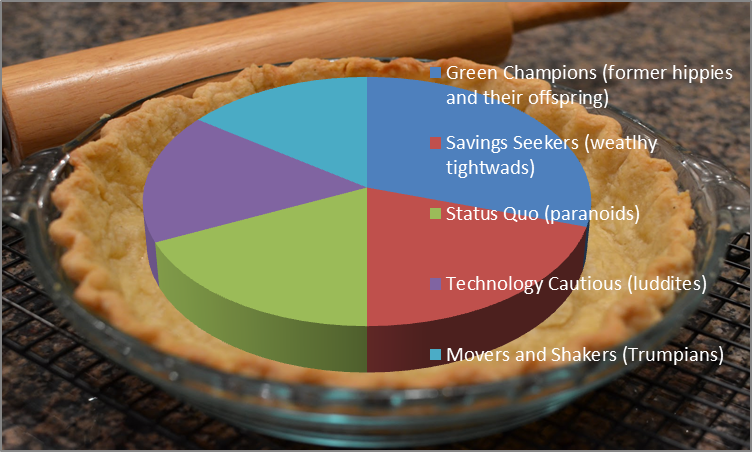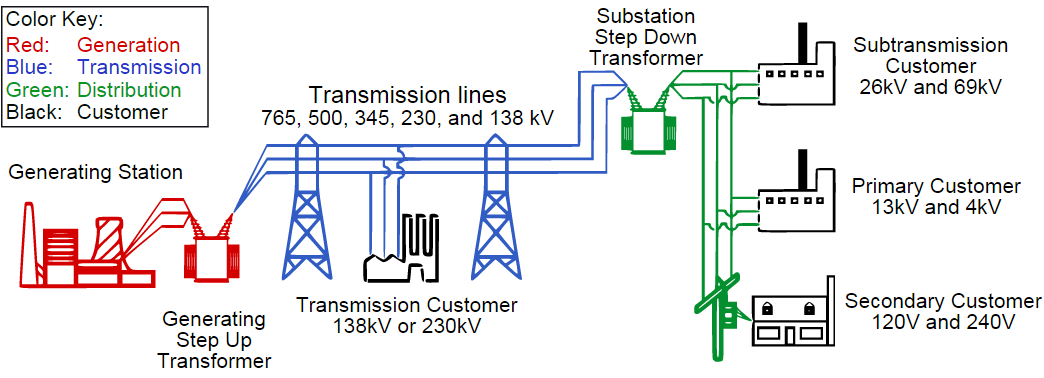
I have written several times about smart grid hype; in particular about a year ago in Deaf and Mute Smart Meter. In that post, I described how utilities could truly treat demand response as a resource by using smart meter data, predictive consumption, and giving customers the power of their smart phone or tablet to participate in the infamous “utility of the future”. Customers want engagement, and they want control. Touché.
A recent edition of Public Utilities Fortnightly (subscription) explained that indeed the smart grid is in a coma (my term). The title of the article is Smart Grid Isn’t Dead, but upon reading it, the smart grid and smart meters physically exist, but they don’t respond to stimuli of any sort: a coma.
A separate article in the same Fortnightly edition describes the smart grid as a “hasty effort to upgrade technology without a strategic plan for effective utilization”. That is quite succinct and well said. “The shortcoming has led to widespread disappointment among rate-paying public with the 50 million smart meters already deployed in the U.S.”
Fifty million smart meters and no strategy?!
As Rant readers know, the grid we have was designed with centralized power generation with transmission and distribution from those plants to energy users. Transmission is also used to connect grids for redundancy, resilience, and reliability. It is interesting to note that where capacity is most constrained and supply is therefore least reliable[1], distributed energy resources (DERs) are growing, and the need for integration and smart grid is the greatest. But at the same time, the DERs are a result of poor reliability.
I would bet that the customers building and owning their DERs would rather have the utility pay for the added reliability – and I’m not talking about utility-owned DERs on customer sites. Energy users are doing it because they think they have to for their business and their customers.
Segmenting the Smart Grid
Fortnightly states the perception of smart grid moribundity is a result of no “smart pricing”, which has been explained in this blog multiple times including The Super Genius Grid – for both supply and demand resources. This lack of activity, I would guess, contributes to findings by the Smart Grid Consumer Collaborative that “anti-smart meter activists” are gaining traction. I have that in quotes because I find “anti-smart” (dumb) to be humorous; i.e., dumb meter activists.
As you might guess, the collaborative seeks to “segment and conquer” the ill-informed consumer. Their research indicates half of consumers have never heard of smart grid or smart meters. Twenty five percent have heard the terms but don’t know what they mean. The last quarter think they know what these things are.
Segmentation has been the rage for marketing expertise at conferences for a long time. Pulling the fru fra curtain back to call it what it is, segmentation is profiling customers by their characteristics. The Collaborative identifies five silos into which they profile people. These would apply to energy efficiency consumers as well. I will add a sixth, later.
- Green Champions – this caste views smart energy technology as a prime fit for “our environmentally aware, high-tech lifestyles”. Green Champion translated: gray-hair hippies and their offspring.
- Saving Seekers – this caste would ask, “How can we use smart meters to save money?” Saving Seeker translated: wealthy tightwads. Interestingly, the article states people assigned to this silo have the lowest income. My unscientific life experience tells me wealthy tightwads – and understandably so. They were children during the depression, and so they are conditioned to save and pinch, as do their children.
- Status Quo – this caste wants to be left alone. They already have low consumption. Status Quo translated: paranoids. They don’t want utility hooks in their “business”.
- Technology Cautious – this caste wants to use energy wisely but cannot fathom how technology would help. Technology Cautious translated: luddites.
- Movers and Shakers – this caste includes the self-proclaimed smart people who need to be razzle dazzled before being tricked into new technology. Mover and Shaker translated: Trumpians.
The Collaborative sorted people into these castes and reports the following shares. Not surprisingly, green champions, consisting of boomers and their progeny millennials, take up the largest slice.
Saving seekers consisting of the forgotten generation and Gen Xers take the next largest slice. Note, these are the moderate wealthy who get creamed by the IRS. The Mover and Shaker Trumpians of course are mega wealthy, and they make sure everyone knows it.[2]
The Technology Cautious consists of multiple generations, except Millennials for whom not having technology would be like not having air.

So what? I’m just a marketing wannabe, but I can profile people as well as anyone – getting them to bite is another thing. Green Champions first; Savings Seekers second; and Movers and Shakers third.
As for that sixth profile: the Mutts, with a little bit of everything. This would include me – just a mutt. Don’t pass me by, don’t make me cry, don’t make me blue[3]…
[1] Based on unscientific polling of customers in the Northeast.
[2] Crust courtesy of http://forknplate.com/2013/12/08/make-easy-pie-crust/
[3] Original Beatles White Album






